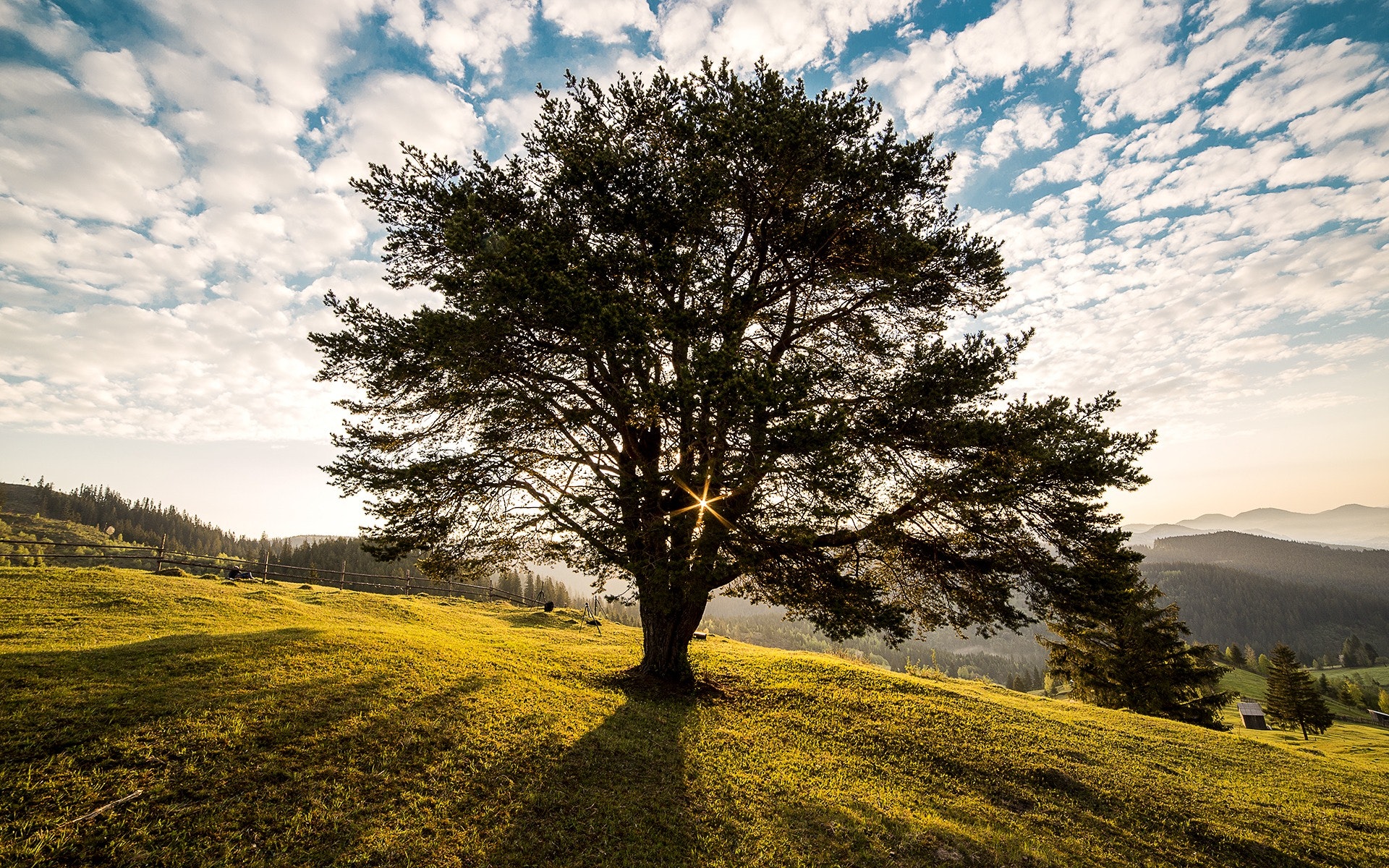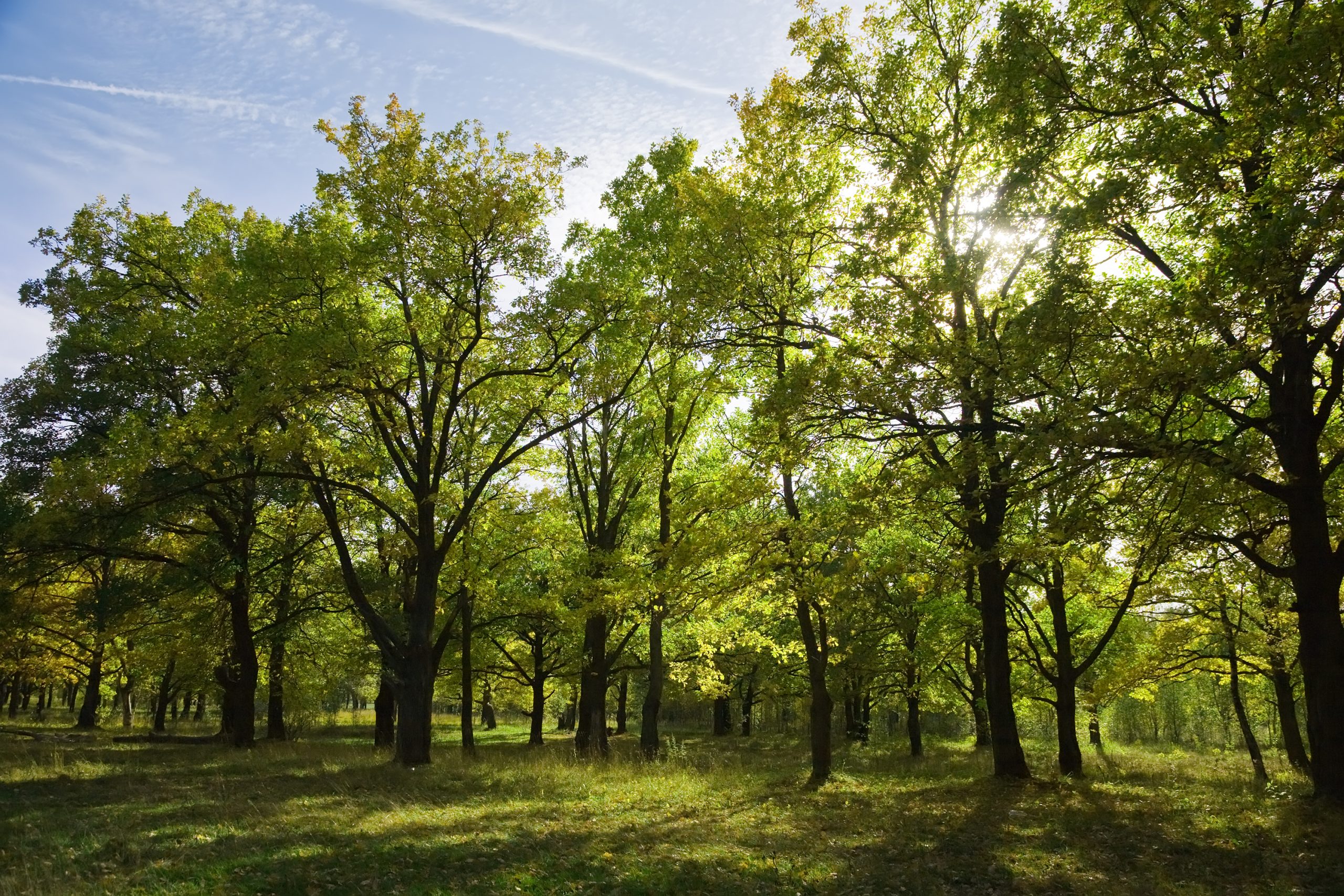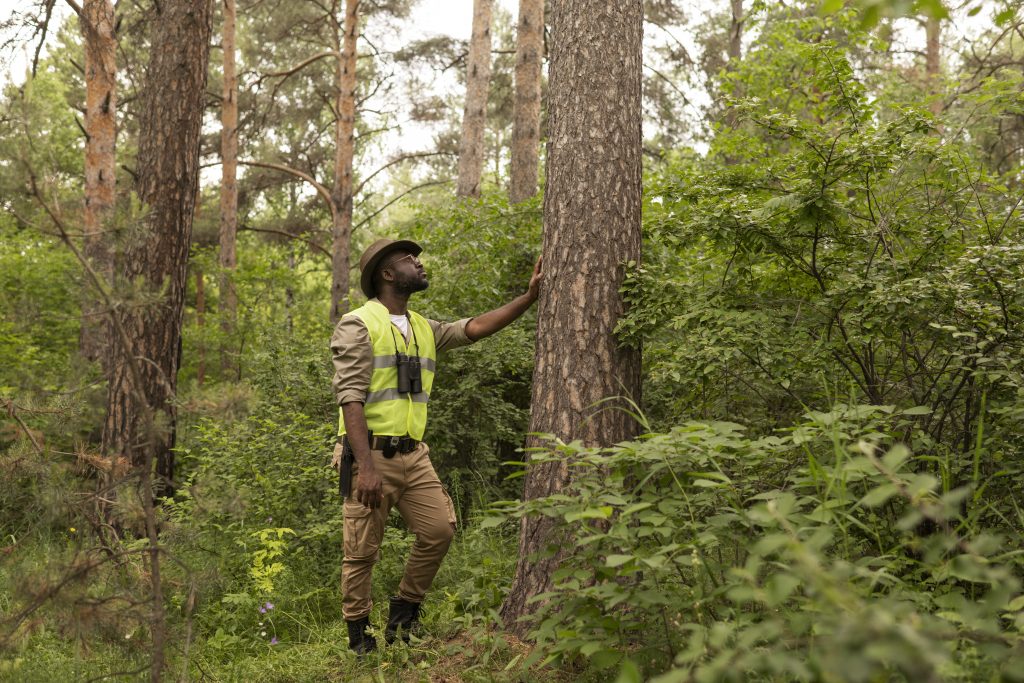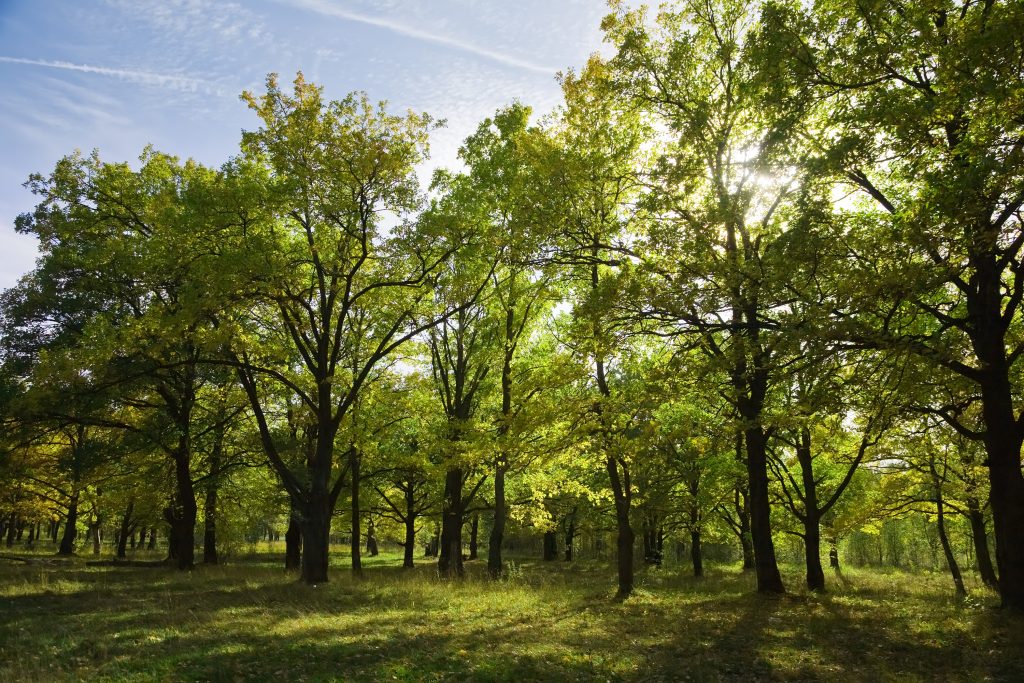THE ROLE OF TREES IN REDUCING NOISE POLLUTION
THE ROLE OF TREES IN REDUCING NOISE POLLUTION
The role of trees in reducing noise pollution is both valuable and multifaceted. Trees serve as natural barriers and absorbers of sound, effectively mitigating the negative effects of noise on human well-being and the environment. Here’s an in-depth explanation of how trees contribute to noise reduction:

- Absorption of Sound Waves: Trees, especially those with dense foliage, play a crucial role in absorbing sound waves. The leaves and branches of trees act as surfaces that capture and dissipate sound energy, reducing its intensity. As sound waves pass through the tree canopy, some of their energy is absorbed by the leaves, branches, and stems.
- Deflection and Reflection of Sound: Tree canopies and trunks can redirect sound waves, changing their direction and reducing their impact on specific areas. Trees positioned between noise sources and sensitive areas act as natural barriers, deflecting sound waves away from residential neighborhoods, public spaces, and buildings. Moreover, trees can also reflect sound waves, further preventing noise propagation.
- Diffusion of Sound: The irregular surfaces of tree foliage help scatter and disperse sound waves, diminishing their intensity. This diffusion effect is particularly beneficial in breaking up concentrated noise and spreading it over a wider area, resulting in a more balanced and less disruptive acoustic environment.
- Species Selection and Structure:
- Trees with dense canopies, soft leaves, and complex branching structures are most effective at reducing noise.
- Tall trees act as effective noise barriers, especially when positioned strategically.
- Trees arranged in rows or clusters can create a more comprehensive noise-reduction effect.
- Urban Planning and Green Infrastructure:
- Incorporating trees into urban planning can strategically position them to act as noise buffers.
- Tree-lined streets, green spaces, and parks serve as natural barriers against noise pollution.
- Green corridors along roads and highways enhance noise reduction in densely populated areas.
- Psychological and Health Benefits:
- Reduced noise pollution leads to decreased stress and anxiety among individuals.
- Quieter environments created by trees contribute to improved mental well-being and overall quality of life.
- Environmental and Ecological Considerations:
- Trees that mitigate noise pollution also provide habitat for birds and other wildlife, enhancing biodiversity.
- Trees contribute to better air quality, which in turn can positively impact noise propagation.
- Economic and Aesthetic Value:
- Noise reduction provided by trees can increase property values in residential and commercial areas.
- Trees add aesthetic value to landscapes while simultaneously contributing to quieter surroundings.
In urban areas and spaces with high levels of noise pollution, the strategic planting and maintenance of trees can significantly alleviate the negative impacts of noise on human health and well-being. Trees act as dynamic and eco-friendly solutions that enhance the quality of life in communities, promote sustainability, and create harmonious environments.
Impact of Noise Pollution on Human Well-Being
Noise pollution has a significant and far-reaching impact on human well-being, affecting physical, mental, and emotional health. The continuous exposure to excessive and unwanted noise can lead to a range of adverse effects, both immediate and long-term. Here are some of the key impacts of noise pollution on human well-being:

- Physical Health Effects:
- Hearing Damage: Prolonged exposure to high levels of noise can cause permanent damage to the ears, leading to hearing loss or impairment.
- Sleep Disturbances: Noise disrupts sleep patterns, leading to reduced sleep quality and quantity. Chronic sleep deprivation has numerous health implications.
- Increased Stress Hormones: Noise triggers the release of stress hormones like cortisol and adrenaline, contributing to chronic stress and related health issues.
- Cardiovascular Problems: Long-term exposure to noise pollution is linked to increased risk of hypertension, heart disease, and stroke.
- Mental and Emotional Health Effects:
- Stress and Anxiety: Persistent noise can lead to heightened levels of stress and anxiety, negatively impacting mental well-being.
- Cognitive Impairment: Noise pollution can impair concentration, memory, and problem-solving abilities, affecting daily productivity.
- Irritability and Agitation: Constant exposure to noise can lead to feelings of irritability, frustration, and decreased tolerance for daily stressors.
- Depression: Noise pollution has been associated with an increased risk of developing symptoms of depression and mood disorders.
- Communication and Social Effects:
- Communication Interference: Excessive noise interferes with effective communication, leading to misunderstandings and strained interactions.
- Social Isolation: Individuals living in noisy environments may experience reduced social engagement and interactions due to the discomfort caused by noise.
- Developmental Impact on Children:
- Cognitive Development: Noise pollution can disrupt children’s cognitive development, including language acquisition and academic performance.
- Behavioral Issues: Children exposed to noise pollution may exhibit behavioral problems, including hyperactivity and attention deficits.
- Quality of Life and Well-being:
- Reduced Enjoyment of Living Spaces: Noise pollution can diminish the enjoyment of indoor and outdoor spaces, affecting overall quality of life.
- Loss of Privacy: Unwanted noise can invade private spaces, leading to a sense of intrusion and discomfort.
- Workplace Effects:
- Reduced Productivity: Noise in the workplace can decrease productivity, concentration, and employee satisfaction.
- Occupational Health: Long-term exposure to occupational noise can lead to hearing impairment and related health issues.
Overall, noise pollution poses a significant threat to human health and well-being, impacting physical health, mental health, quality of life, and social interactions. Addressing noise pollution requires proactive measures at individual, community, and policy levels to create quieter, more peaceful environments that support human health and a higher quality of life.
Positive Effects of Trees in Mitigating Noise Pollution
Trees offer a range of positive effects in mitigating noise pollution, making them valuable natural tools for creating quieter and more serene environments. These effects stem from the trees’ ability to absorb, deflect, and diffuse sound waves. Here are some of the positive ways in which trees contribute to noise reduction:
- Absorption of Sound Waves:
- Trees with dense foliage, such as broad-leaved and evergreen trees, absorb sound energy.
- Leaves and branches act as surfaces that capture and dissipate sound waves, reducing their intensity.
- Deflection and Reflection of Sound:
- Tree canopies and trunks can deflect sound waves, changing their direction away from sensitive areas.
- Trees positioned between noise sources and buildings can redirect sound away from residential areas.
- Tree barriers can reflect sound waves, preventing noise propagation to certain areas.
- Diffusion of Sound:
- The irregular surfaces of tree foliage help disperse sound waves, diminishing their intensity.
- Diffused sound becomes less concentrated and less disruptive to the human ear.
- Noise Buffers and Barriers:
- Tall trees can act as natural noise barriers, particularly in areas with heavy traffic or industrial noise.
- Rows of trees along roads, highways, and urban streets create buffers against noise pollution.
- Green Corridors and Parks:
- Tree-lined streets, green spaces, and parks serve as peaceful sanctuaries in urban environments.
- These areas provide relief from noise pollution and offer residents a tranquil escape.
- Psychological Benefits:
- Quieter environments created by trees contribute to reduced stress and anxiety levels.
- Exposure to green spaces with reduced noise pollution can have positive effects on mental well-being.
- Aesthetic Improvement:
- Trees enhance the visual appeal of landscapes and contribute to a more pleasing environment.
- Aesthetically pleasing spaces encourage people to spend time outdoors, benefiting their overall well-being.
- Biodiversity and Ecosystem Services:
- Trees that mitigate noise pollution also provide habitat for birds and other wildlife.
- Diverse ecosystems contribute to overall ecological balance and enhance urban biodiversity.
- Air Quality Improvement:
- Trees contribute to better air quality by absorbing pollutants and releasing oxygen.
- Improved air quality can indirectly contribute to reduced noise propagation.
- Economic and Social Value: – Noise reduction provided by trees can increase property values in residential and commercial areas. – Communities with green spaces and tree-lined streets attract residents and visitors.
Overall, trees play a vital role in creating healthier and more pleasant urban environments by mitigating noise pollution. By strategically planting and maintaining trees, individuals and communities can enjoy the numerous benefits of quieter surroundings and improved quality of life.
Mechanisms of Noise Reduction
The mechanism of noise reduction through trees involves several physical and acoustic principles that allow trees to absorb, deflect, and diffuse sound waves. Trees act as natural barriers and absorbers of sound energy, which helps reduce the intensity of noise pollution. Here’s a breakdown of the mechanisms through which trees mitigate noise:

- Absorption of Sound Waves:
- Leaf and Branch Surfaces: The surfaces of leaves and branches of trees are porous and irregular, making them effective at absorbing sound energy. When sound waves encounter these surfaces, the energy is converted into mechanical vibrations within the plant material, causing a reduction in sound intensity.
- Deflection and Reflection of Sound:
- Tree Canopy Deflection: The dense canopy of trees can deflect sound waves by changing their direction. When sound waves encounter the tree canopy, they may be redirected upward or to the sides, away from the ground level where people reside.
- Trunk and Canopy Reflection: The trunks and canopy surfaces of trees can also act as surfaces for reflecting sound waves. By reflecting sound in different directions, trees can prevent noise from propagating directly to certain areas.
- Diffusion of Sound:
- Irregular Foliage: The uneven and varied surfaces of tree foliage contribute to the diffusion of sound waves. Instead of sound waves traveling in a concentrated and focused manner, they scatter and spread in multiple directions, resulting in reduced intensity.
- Noise Buffers and Barriers:
- Tall Trees as Noise Barriers: Tall trees, when strategically positioned, can act as natural noise barriers. They block or attenuate the direct path of sound waves from the noise source to the receiver, effectively reducing noise levels.
- Rows of Trees: Rows of trees planted in a line along roads or highways create a barrier that absorbs and deflects sound, providing a buffer between noise sources and sensitive areas.
- Green Infrastructure and Urban Planning:
- Green Spaces: Urban parks, green corridors, and tree-lined streets serve as natural sanctuaries that provide relief from noise pollution. The presence of trees contributes to a quieter and more pleasant environment.
- Strategic Arrangement: Trees can be strategically planted to form natural barriers that shield communities from noise generated by traffic, industry, and other sources.
- Psychological and Health Effects:
- Stress Reduction: The calming and soothing effects of natural environments, such as tree-covered spaces, contribute to reduced stress and anxiety, making noise pollution feel less intrusive.
In essence, trees reduce noise pollution through a combination of sound absorption, deflection, reflection, and diffusion. These mechanisms work together to create quieter and more comfortable environments that promote well-being and enhance the quality of life for individuals and communities.
About Murray, Utah
Murray is a city situated on the Wasatch Front in the core of Salt Lake Valley in the U.S. state of Utah. Named for territorial governor Eli Murray, it is the state's fourteenth largest city. According to the 2020 census, Murray had a population of 50,637. Murray shares borders with Taylorsville, Holladay, South Salt Lake and West Jordan, Utah. Once teeming with heavy industry, Murray's industrial sector now has little trace and has been replaced by major mercantile sectors. Known for its central location in Salt Lake County, Murray has been called the Hub of Salt Lake County. Unlike most of its neighboring communities, Murray operates its own police, fire, power, water, library, and parks and recreation departments and has its own school district. While maintaining many of its own services, Murray has one of the lowest city tax rates in the state.
Neighborhoods in Murray, Utah
Murray Oakes, Grant Park, Southwood Park, Murray Park, Murray Park Restrooms, Willow Pond Park, Neighborhood Veterinary Care
Things To Do in Murray, Utah
Bus Stops in Murray, Utah to Truco Services, Inc.
Bus Stop in Murray Central Station (Bay C) Murray, Utah to Truco Services, Inc.
Bus Stop in State St @ 4801 S Murray, Utah to Truco Services, Inc.
Bus Stop in Murray North Station Murray, Utah to Truco Services, Inc.
Bus Stop in State St @ 4949 S Murray, Utah to Truco Services, Inc.
Bus Stop in Murray Central Frontrunner/Trax Station Murray, Utah to Truco Services, Inc.
Bus Stop in Murray Blvd / Vine St (SB) Murray, Utah to Truco Services, Inc.
Bus Stop in State St @ 3925 S Murray, Utah to Truco Services, Inc.
Bus Stop in State St @ 4824 S Murray, Utah to Truco Services, Inc.
Bus Stop in State St @ 5223 S Murray, Utah to Truco Services, Inc.
Bus Stop in Murray Blvd / Allendale Dr (NB) Murray, Utah to Truco Services, Inc.
Bus Stop in Murray Blvd @ 5039 S Murray, Utah to Truco Services, Inc.
Bus Stop in State St @ 4721 S Murray, Utah to Truco Services, Inc.
Driving Directions in Murray, Utah to Truco Services, Inc.
Driving Directions from Woodruff Tree Trimming and Removal to 4640 Commerce Dr, Murray, UT 84107, USA
Driving Directions from Reliable Tree Care to 4640 Commerce Dr, Murray, UT 84107, USA
Driving Directions from Tree Pro-Tech to 4640 Commerce Dr, Murray, UT 84107, USA
Driving Directions from Prestige Tree And Landscape to 4640 Commerce Dr, Murray, UT 84107, USA
Driving Directions from Excellence Tree & Landscape to 4640 Commerce Dr, Murray, UT 84107, USA
Driving Directions from Amen Trees to 4640 Commerce Dr, Murray, UT 84107, USA
Driving Directions from Tim's Tree Care to 4640 Commerce Dr, Murray, UT 84107, USA
Driving Directions from Jordan Tree Service - Murray to 4640 Commerce Dr, Murray, UT 84107, USA
Driving Directions from Arbor Works to 4640 Commerce Dr, Murray, UT 84107, USA
Driving Directions from Diamond Tree Experts to 4640 Commerce Dr, Murray, UT 84107, USA
Driving Directions from Green Tree Arborist to 4640 Commerce Dr, Murray, UT 84107, USA
Driving Directions from TruCo Services to 4640 Commerce Dr, Murray, UT 84107, USA
Reviews for Truco Services, Inc. Murray, Utah
Emily Abercrombie
We had a great experience with TruCo! They were well priced, responsive and prompt. Michael was a pleasure to work with and gave us advice on which plants to put in where we took out our ugly old shrubs. I would highly recommend this company!!!
Michelle Turpin
TruCo Services gets 5 stars from us for customer service. We experienced a few issues with their services this last year and Rob Eccles in senior management, stepped in and immediately handled our issues. He was very committed to making sure they understood our expectations and would execute to make us happy.
Siobhan Billingsley
I work for a property management company and have the pleasure of working with Rob at a community in Sandy. He has been incredible to work with and always responds in a timely manner. He knows all the homeowners by name and address and is aware of all the "problem" areas when it comes to sprinklers. I never have to worry about following up with him because he always reaches out to provide me with an update. If you're looking to work with someone who takes pride in their job, is professional, and can solve the worst landscaping problems thrown your way, Rob is your guy. Thank you, Rob for all you do!
Jaime S.
We have used Truco at 2 of the complexes we manage, they have been great to work with. Good quality service, outstanding customer service with good communication. That's hard to find these days. I highly recommend them. Travis has been awesome to work with.
Jerusha Smart
We use TruCo for a majority of our properties and our home. While other landscaping companies we use come and go for various reasons like cost, communication issues, work performance, etc., TruCo is always consistent in price and work. Also, Rob is the best.




